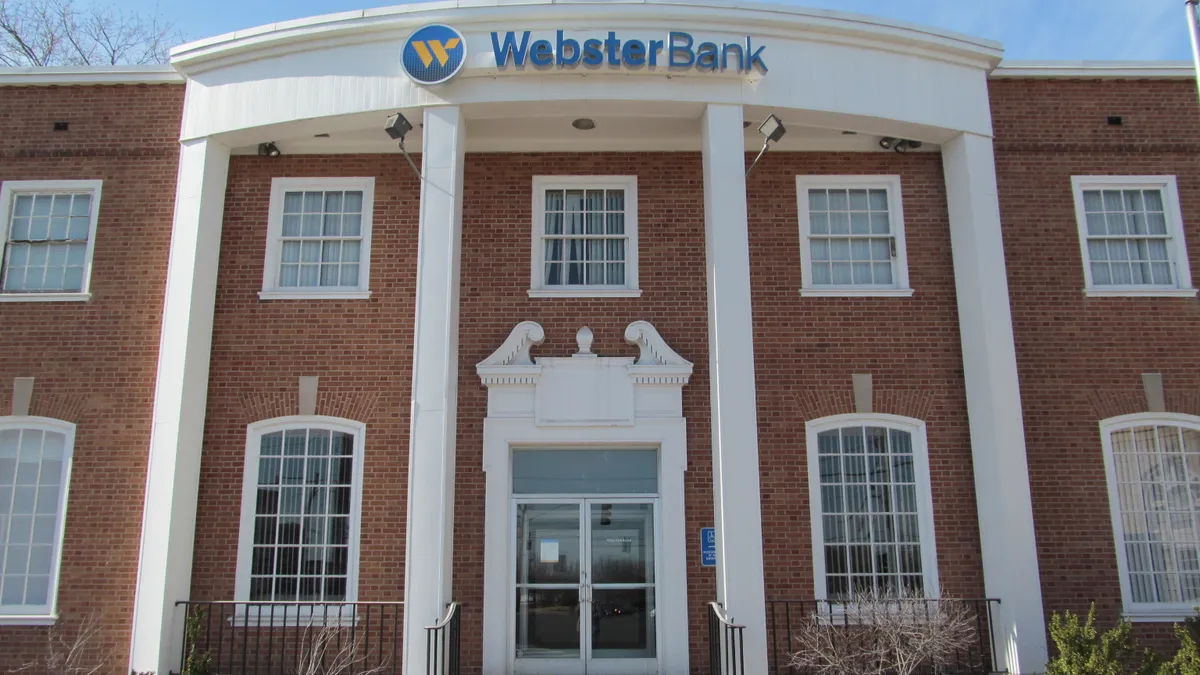"A year later, it feels eerily similar to pre-SVB downfall.”
That’s a quote in the Financial Times from Peter Hébert, chief operating officer at Lux Capital, a Silicon Valley-based venture-capital firm.
He’s opining that the void left by the demise of Silicon Valley Bank isn’t as cavernous as one may have believed a year ago — because of the banks that have stepped in to fill it.
But without context, the comment could easily have applied to the tightrope New York Community Bank walked Wednesday. NYCB’s share price plummeted when reports surfaced that the bank was seeking a cash infusion. The nosedive was steep enough to halt trading. But within hours, NYCB secured $1.05 billion from investors led by former Treasury Secretary Steven Mnuchin.
“This buys them a ton of time,” Steven Kelly of Yale University’s Program on Financial Stability told CNBC. “It means the FDIC isn’t coming to seize them on Friday.”
Wind the clock back one year. SVB disclosed March 8, 2023, that it lost nearly $2 billion in the sale of U.S. treasuries and mortgage-backed securities but said it planned to raise $2.25 billion by selling stock.
Customers pulled $42 billion in deposits March 9. Regulators shuttered the bank March 10.
In the intervening 364 days, much has changed and much has not. Here’s a look at six points of progress or areas that may need improvement.
1. Upcoming regulation
“The beauty of capital is that it doesn’t care about the source of the loss,” Michael Barr, the Federal Reserve’s vice chair for supervision, said in July. “Whatever the vulnerability or the shock, capital is able to help absorb the resulting loss and, if sufficient, allow the bank to keep serving its critical role in the economy.”
Considering Barr issued his contentious capital requirements proposal less than three weeks later, one could logically assume an increase in held capital, at some level, is meant as an antidote to a potential bank run.
Fed Chair Jerome Powell, in testimony this week, said that would be incorrect.
“The Basel III rules … are not the thing that is directly related to Silicon Valley Bank,” he told lawmakers Thursday, according to American Banker.
The true one-for-one is a set of liquidity requirements Powell said he expects to be proposed this year.
The proposal, The New York Times reported Tuesday, is expected to focus on three areas: the Fed’s discount window, held-to-maturity securities, and a tiered system that would treat customers in segments like crypto, or those who hold deposits too large to be covered by the Federal Deposit Insurance Corp., as flight risks — more prone to pulling their deposits.
2. Speaking of the discount window ...
During a run as furious as the one that took down SVB, banks need fast access to the discount window, several observers said.
“You call your regional Fed, somebody answers the phone maybe, then they'll have a meeting to see if it's actually OK for you to draw, then they talk to Washington and you draw," PNC CEO Bill Demchak said, according to American Banker.
“You have a fast bank run based off consumer tech, which is how we live, yet on the back end, the banks are getting provisions of capital in the way they did in the 1940s," said Rep. Patrick McHenry, R-NC. "It should be done with the push of a button rather than a phone call and it should be done in an instant rather than days.”
Reports from the Fed and FDIC indicate SVB and Signature Bank employees could not timely access the discount window.
Susan McLaughlin, an executive fellow at Yale’s Program on Financial Stability, said that likely wouldn’t have saved SVB or Signature but could have stalled their failure. She recommended mandating regular testing of discount window readiness, American Banker reported.
Powell, in testimony Thursday, acknowledged the window “needs to be brought up technologically into the modern age [and] we need to eliminate the stigma” surrounding its use.
3. CRE exposure
One thing that has changed between 2023 and 2024 is the root pain point of the year’s crisis. Where SVB’s collapse last year stemmed in large part from the sudden flight of many substantial depositors at once, NYCB’s woes this year were spawned through exposure to commercial real estate. The COVID-19 pandemic and subsequent remote-work boom made office space less valuable. But for NYCB, the fulcrum is multifamily properties.
Loans tied to multifamily properties made up 44% of NYCB’s $84.6 billion portfolio as of Dec. 31, according to Reuters. Nearly 8.3% of those loans were "criticized," or at higher risk of default, the bank disclosed in January.
Additionally, about half of NYCB's multifamily portfolio was exposed to the rent-regulated real estate market as of December, American Banker reported.
A 2019 law in New York prevents landlords from raising rents on regulated apartments, which has translated to a 50% drop in the valuation of rent-regulated properties in New York City over the past five years, Seth Glasser, a multifamily real estate broker at Marcus & Millichap, told American Banker.
Other banks, such as Valley National Bank, are suffering by (perhaps mistaken) association.
Valley’s stock price has dropped 23.9% since NYCB disclosed its fourth-quarter loss Jan. 31. But the New Jersey bank doesn’t serve the multifamily niche — or even the downtown office high-rises. Valley’s bread and butter is in the suburbs.
“Where you’re seeing the losses is on the big buildings that I’m not financing,” Valley National Bank CEO Ira Robbins told The Wall Street Journal.
The bank plans to pull back on CRE lending. But Robbins appears confident the market will reward Valley’s differentiation.
“When they see our first-quarter results, then things will begin to shift,” he said.
4. A growing ‘problem bank’ tally
The FDIC flagged 52 banks in the last quarter of 2023 that it considers weak. That’s eight more than in the previous three months, and the biggest increase since SVB’s failure, according to the Financial Times.
The agency does not name specific banks on its “problem” list, but NYCB is not there. The Long Island bank’s asset total exceeds the combined $66 billion in assets held by the 52 “problem” banks.
5. Climbing DIF costs
The FDIC adjusted upward — to $20.4 billion — the losses derived from SVB and Signature’s failures, the agency disclosed last month, according to Bloomberg. That’s a 25% bump from the $16.3 billion that surviving banks had been estimated in November to owe to replenish the Deposit Insurance Fund. The add-on comes out to $130 million for PNC, for example, and $127 million for BNY Mellon.
The FDIC last year said the figure could fluctuate. Nonetheless, the increase drew pushback from a leading trade group.
“Since last spring, we have called on the FDIC to do everything possible to limit the final cost of any special assessment on banks and ensure a transparent process,” Josh Britton, a spokesperson for the American Bankers Association, told Bloomberg. “At a minimum, banks and the public deserve a full accounting of why the final cost is moving higher.”
6. Inconsistent regulation
In comments to American Banker, PNC’s Demchak bemoaned banks that “charter shop” — that is, cherry-pick their regulator in search of the easiest path.
Among Demchak’s lessons learned from last year’s crisis was a glimpse at inconsistency among regulators.
"It astounded me what First Republic and Silicon Valley were able to do” under the watch of the FDIC and the Federal Reserve Bank of San Francisco, Demchak said.
“Bluntly, if that was an OCC bank, that never would have happened,” he added.
Sources who spoke to Reuters about the 2022 merger of NYCB and Flagstar may beg to differ.
NYCB structured its merger specifically to get around its regulator, the FDIC, people familiar with the matter asserted. The FDIC had privately vetoed the merger over fair-lending concerns it had with Flagstar. But NYCB rebuilt the merger to make Flagstar the surviving entity under a national banking charter to be overseen by the OCC.
The OCC had its own concerns — namely, NYCB’s CRE exposure. But the regulator ultimately greenlit the merger on the thinking that Flagstar’s assets would diversify NYCB’s loan book.
In a January speech, the OCC’s acting chief, Michael Hsu, asserted that regulators shouldn’t view mergers as yes/no proposals.
“The question is not should we or shouldn't we,” Hsu told Reuters. "The question is, ‘How do we get the best [mergers]?’”
Epilogue: The ‘regional’ banking crisis
Valley National Bank isn’t the only lender to be lumped in to a category because of its business model. In the immediate aftermath of the SVB and Signature failures, banks of a particular size all seemed under fire — a notion that frustrates Fifth Third CEO Tim Spence.
“Fifth Third is declaring war on the term regional banking crisis,” Spence said at this week’s RBC Capital Markets Financial Institutions Conference in New York City. “The lesson that we relearn every 15 years as an industry is it’s really bad to allow any part of your balance sheet to become overly concentrated in one place.”
But as regional banks vary, so do the takeaways of their executives.
“While our banking system is unquestionably stronger than it was in the wake of the Great Recession, 2023 sent us a strong signal that we as an industry still have much work ahead to earn and re-earn public trust,” M&T CEO René Jones wrote last month in his annual letter to shareholders.
Perhaps the value of looking back at the one-year mark is that, even though it may be difficult to quantify changes the banking sphere has undergone or the progress that arguably is needed in some areas, a year, in itself, is a known quantity.
Or maybe not.
"It has been a year, but it feels a lot longer,” said Chris McGratty, a Keefe, Bruyette & Woods analyst, told The Wall Street Journal.





















